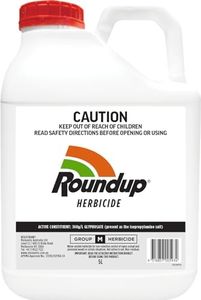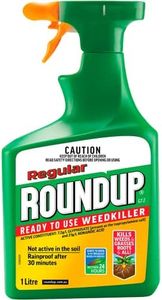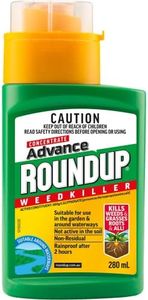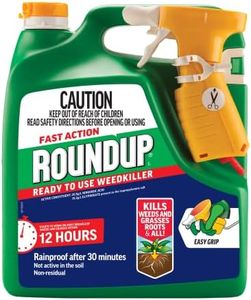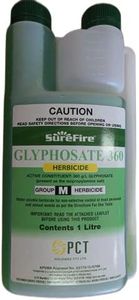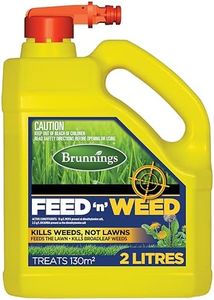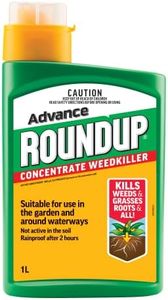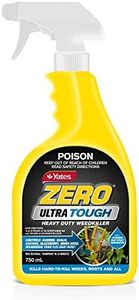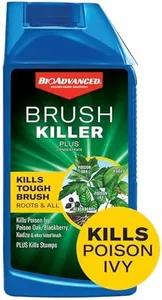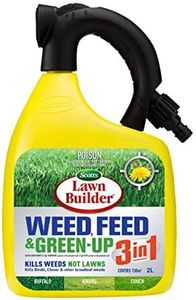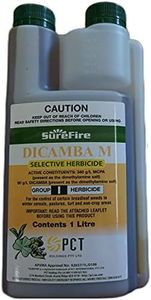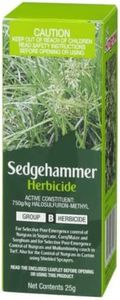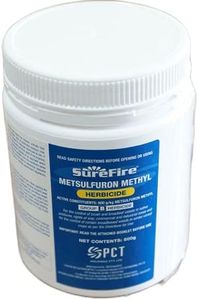We Use CookiesWe use cookies to enhance the security, performance,
functionality and for analytical and promotional activities. By continuing to browse this site you
are agreeing to our privacy policy
10 Best Dandelion Killer
From leading brands and best sellers available on the web.Buying Guide for the Best Dandelion Killer
Choosing the right dandelion killer can make your lawn look healthier and reduce the time you spend pulling out these stubborn weeds by hand. The key to making a good choice is understanding your lawn's needs, knowing the different types of dandelion killers available, and considering how and where you plan to use the product. Always match the product to your lawn size, the type of grass you grow, and your comfort with using chemicals or natural alternatives. Remember that some formulas target only dandelions, while others may affect a wider range of weeds. The effectiveness and safety for pets, kids, and the environment are also important aspects to consider.Type (Selective vs. Non-Selective)The 'type' refers to whether the dandelion killer targets only the weeds you don't want (selective) or kills most plants it contacts (non-selective). This is important because selective killers can be used directly on your lawn without harming the grass, while non-selective killers will damage or kill any plants they touch. For lawns and turf, selective herbicides are preferred, while non-selective types are best for driveways, patios, or areas where you want nothing to grow. To pick the right one, think about where you need to remove dandelions and whether you need to protect the surrounding grass or plants.
Application MethodThis spec covers how the dandelion killer is applied, such as ready-to-use sprays, concentrates, or granular formulations. It's important since application method can affect ease of use, coverage, and even effectiveness. Ready-to-use sprays are good for spot treating single weeds, while concentrates and granules are better for treating larger areas. If you have just a few dandelions, a sprayer may be enough. For bigger lawns with lots of weeds, you might prefer products you mix with water or spread across the grass.
Speed of ResultsThis refers to how quickly you can expect to see the dandelions dying after application. Some products act within hours, while others may take several days or even a couple of weeks. Faster action is helpful if you need results before an event or at the start of the growing season, but sometimes slower-acting products might be safer for certain grass types. Consider how patient you are or how urgently you need to solve your dandelion problem to determine which timeframe works best for you.
Coverage AreaCoverage area tells you how much lawn or garden the product will treat. It's important for making sure you buy enough product for your needs, and it helps prevent over- or under-applying. Products will list the square footage they cover; small bottles are for spot treating, while large containers are for big lawns. Think about the size of your yard or the patch you need to treat, and choose a product with the right coverage so you don’t end up running out mid-job or overspending on leftover product.
Active IngredientsActive ingredients are the chemicals or natural substances that actually kill the dandelions. Knowing the ingredient is important for understanding effectiveness, potential harm to your lawn, and safety for pets and children. Common synthetic ingredients include 2,4-D or dicamba, while natural options may use iron or vinegar-based formulas. To pick the right one, check if your grass type is listed as safe, consider any allergy or safety concerns in your household, and decide if you want an organic or chemical approach.
Pet and Child SafetyThis spec covers how safe the product is for pets and children after application. It’s an important consideration if your family or pets uses the lawn often. Some products specify a waiting period before kids or pets can return, while others are labeled as safe once dried, and a few are natural enough to pose very little risk. Think about your household habits and choose a product that matches your safety needs to give peace of mind while managing weeds.
Environmental ImpactThis factor involves how the dandelion killer affects the surrounding environment, including nearby plants, pollinators, water sources, and soil health. It’s important because some products might run off into water systems or harm beneficial insects like bees. Environmentally friendly options might break down quickly or target only the weeds. If you are environmentally conscious, opt for products created to minimize harm while still effectively getting rid of dandelions.
